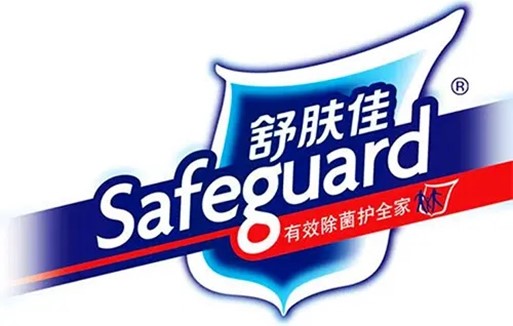
On February 28, 2022, Beijing Intellectual Property Court held that the trademark “Safeguard”(舒肤佳)was recognized as a well-known registered trademark, enjoying additional protection beyond the class and claimed the trademark “Shu Fu Jia” (舒服佳)registered by Shijiazhuang Longtai Knit Textiles Products Co.,Ltd. as invalid for it is involved in imitation and replication of “Safeguard”.
Safeguard (Safeguard antibacterial soap brand) is a brand of the multinational consumer goods giant P&G, which mainly produces antibacterial soaps, liquid soap and other cleansing products. Its first antibacterial soap came out on the US market in 1963 and later on China’s market in 1992. The trademark “Safeguard” got registered in 1993 (trademark No. 713558, in Class 3 “soap perfume” and other goods), and the products soon gained popularity in domestic China for its high-quality and propagandistic advertisement.
In 2010, Longtai registered its trademark “Shu fu jia” (trademark No. 8689072, hereinafter referred to as the disputed trademark) in Class 24 “Textile towels, bath towels" and other goods. As the disputed trademark is highly similar to “Safeguard” in Chinese pronunciation and characters appearance, P&G filed an invalidation application against it in 2018, which was sustained by the China National Intellectual Property Administration (CNIPA) as CNIPA found that the registration of the disputed trademark was involved in copying and imitation, thus declared it invalid.
However, Longtai filed an appeal to Beijing Intellectual Property Court and requested the court to overturn CNIPA’s invalidation decision, and CNIPA and P&G again confirmed the correctness of the original one.
After verifying the submitted facts, Beijing Intellectual Property Court (BIPC) dismissed Longtai’s appeal.
The court found that the focus of the case is whether trademark “Safeguard” can be recognized as well-known and how to define its protection range.
First, as the evidence shows, “Safeguard” products had been continuously sold in China’s market for years before the filing date of the disputed trademark, with continuous, widespread advertisements on newspapers, magazines and other media. Meanwhile, “Safeguard” has been promoted by holding thematic activities, releasing TV commercials and hiring celebrity endorsers, etc. Moreover, “Safeguard” has gained recognition as a well-known trademark many times in administrative procedures. Therefore, the evidence mentioned above can all lead to the conclusion that before the disputed trademark’s filing day, “Safeguard” has already enjoyed reputation as a well-known trademark.
According to the Trademark Law of China, well-known trademarks enjoy additional protection which goes beyond one class, accordingly, even though “Safeguard”and “Shu Fu Jia” were registered under different classes, once “Shu Fu Jia” is confirmed copying and imitation that may cause confusion, it will be defined as infringement trademark. As “Shu Fu Jia” (舒服佳)and “Safeguard”(舒肤佳)share the same Chinese pronunciation “Shu Fu Jia” and similar character appearances, there also doesn’t have a clear distinction formed between their overall meanings, confusions are very likely to be made by the customers, the disputed trademark can be defined as infringement.
Abstract:
P&G’s trademark “Safeguard”(舒肤佳)gained recognition as a well-known registered trademark by the ruling of Beijing Intellectual Property Court on February 28, enjoying an additional protection beyond the class and claimed the trademark “Shu Fu Jia” (舒服佳)registered by Shijiazhuang Longtai Knit Textiles Products Co.,Ltd. as invalid for it is involved in imitation and replication of “Safeguard”. The ruling of the court is consistent with the original decision made by China National Intellectual Property Administration (CNIPA).
|
Copyright © 2003-2018 China Intellectual Property Magazine,All rights Reserved . www.chinaipmagazine.com 京ICP备09051062号 |
|
|


